Multigrain Sourdough Bread
This multigrain sourdough bread is hearty and delicious and makes a great bread for sandwiches. It’s soft, and moist for days, and without commercial yeast. The whole grains add a great texture and flavor and nutritional benefits.
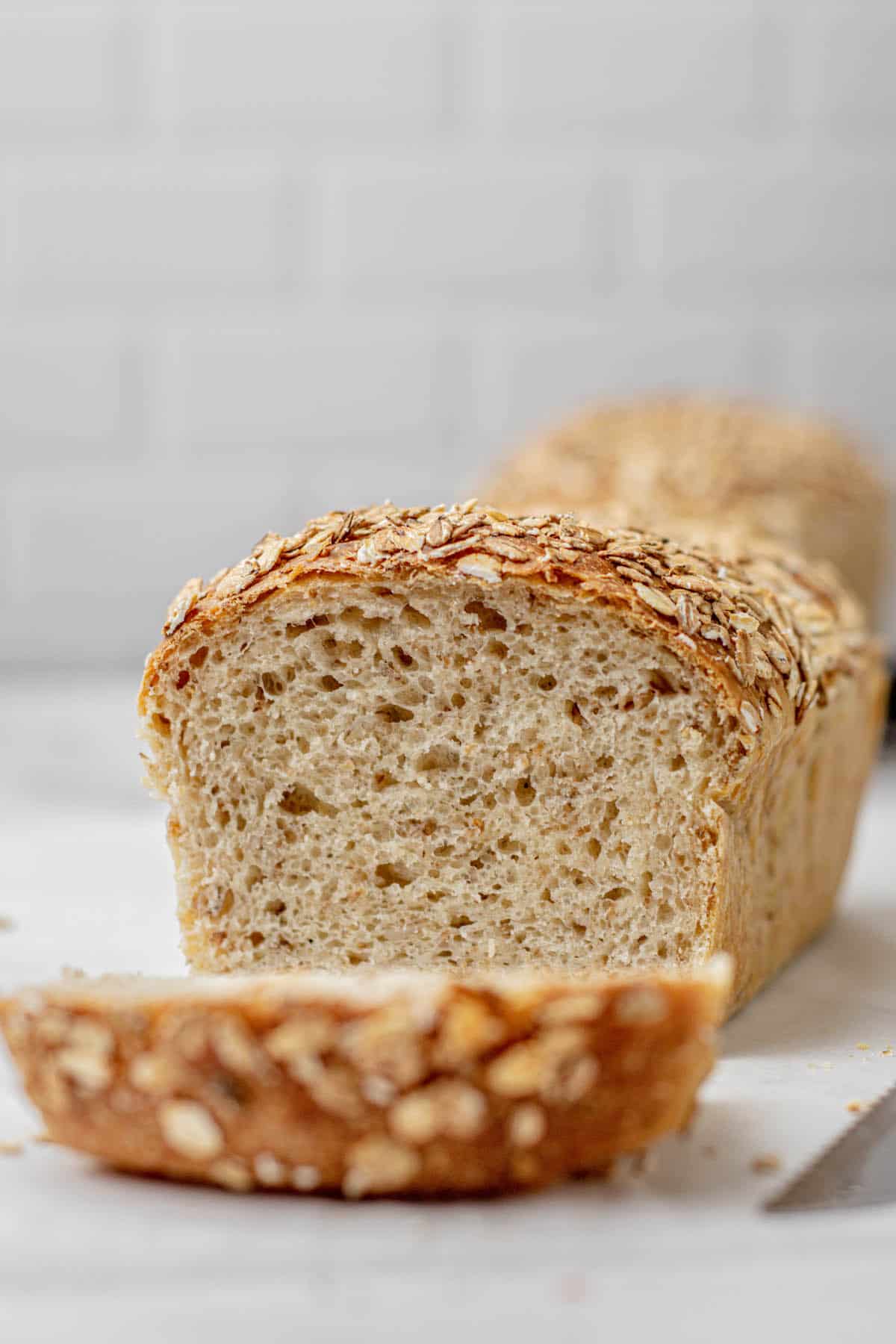
You can use a five or 7-grain cereal mix for this recipe, or make your own. The choice depends on your preference for the complexity of flavor and texture. Just ensure that your mix includes a base of rolled oats, and whole grains for the best health benefits.
A cereal mix is unsweetened and unflavored with just pure grains. It’s usually made of rolled oats, barley, triticale, rye and other grains. If you make your own multigrain blend, use rolled or old-fashioned oats as the base (not steel cut oats), then add different grains and seeds as you like.

The bread dough
The dough for this bread has fairly high hydration, but the oats and grains will soak up a lot of it. They will soak in boiled water for about 20 minutes before the rest of the ingredients are added, which hydrate and plumps them up. Once the rest of the ingredients are added, it makes a sticky but thick dough. You can knead it by hand or in the stand mixer.
The ingredients
Find the ingredient amounts for this multigrain bread recipe in the printable recipe card at the bottom of this post. Here is a rundown of what you will need.
- An active sourdough starter.
- 5 or 7-grain multigrain cereal mix (not sweetened or flavored)
- Hot water
- All-purpose flour or bread flour – with a protein level of at least 11%.
- Butter – a little for flavor
- Soft brown sugar or maple syrup
- Salt
- Seeds (optional) – Pumpkin seeds, flax seeds, poppy seeds, or sunflower seeds can add extra texture.
Learn to make a homemade sourdough starter.

Equipment
You’ll need the following:
- Two 8.5×4.5 loaf pans lined with parchment paper
- Kitchen scale
- Large bowl
Baker’s schedule
Here’s an example of two baker’s schedule for this bread. Feel free to tweak it to suit your own timing. With a bit of planning, you can have bread when you want it!
The fridge proof can also be extended overnight so the bread can be shaped and risen the following day. It can also be skipped according to your preference. The starter for this recipe is fed at 1:1:1 (starter:flour: water), so it will rise within 4-5 hours. If you want to feed the starter the night before, feed it at a higher ratio like 1:3:3, to slow the rising.
Option 1 – Overnight Cold Proof
- 8 am – Feed the starter
- 12:30 pm – Soak the seeds
- 1:00 pm – Mix and knead the dough.
- 1:15 pm – First rise
- 5:30 pm – Cover and refrigerate overnight
- 8 am the following day – Shape and rise until doubled in size
- 1 pm – Bake
Option 2 – Same Day Bake (not including starter feeding)
- 9 pm – Feed the starter
- 8:30 am – Soak the seeds
- 9:00 am – Mix and knead the dough.
- 9:15 am – First rise
- 1:30 pm – Shape and rise again until doubled
- 5:30 pm– Bake
Method
Combine the starter, flour, and water in a small bowl. Mix until smooth, then tip into a clean jar, loosely cover and let it rise in a warm spot until doubled and bubbly.

When the starter has about finished doubling, add the cereal mix to a large bowl and pour over the boiling water. Let them sit and soak until the water has cooled to room temperature.

Once cooled, add in the flour, doubled sourdough starter, sugar and salt and combine into a thick and sticky dough.

Tip the dough onto a lightly floured work space and knead in the room temperature butter.
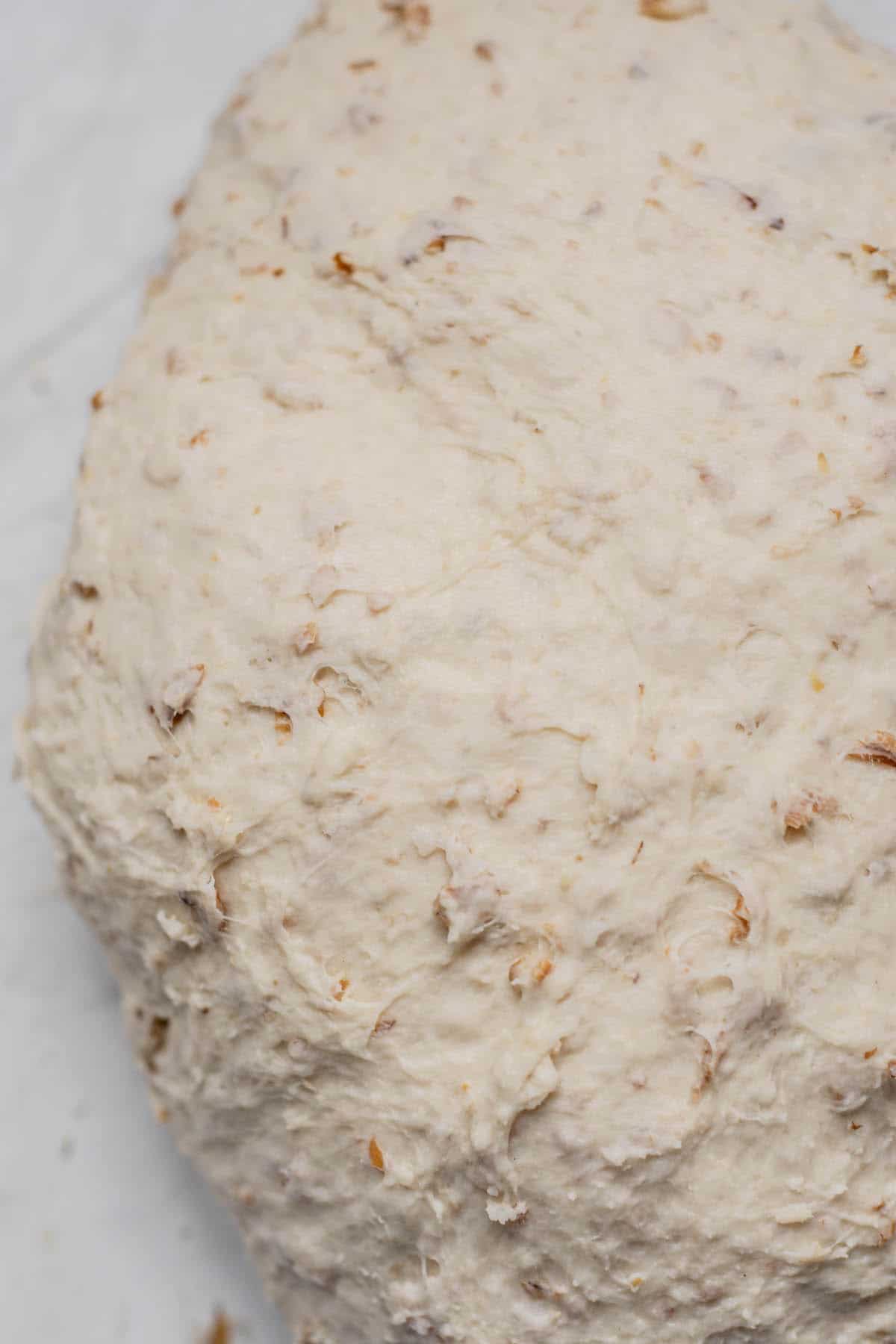
Knead the dough for 6-8 minutes until it becomes stretchy and strong. This can also be done in a stand mixer fitted with a dough hook.
Bulk fermentation time
Transfer the dough to a lightly greased large bowl and cover it with a damp towel. Let it bulk ferment in a warm spot until it has bulked out by around 40-50%. The rise time will depend on the temperature. I place mine in a turned-off oven next to a dish of boiled water.
Cover the dough tightly and refrigerate until ready to shape. This can be between up to 24 hours or skipped, depending on personal preference. See the baker’s schedule above.

Shaping
Line two 8.5×4.5 inch loaf pans with parchment paper.
Pull the cold dough from the bowl onto a lightly floured work surface. Shape it into a ball, then cut it into two equal pieces.

Stretch one piece of dough into a rectangle, then roll it up like a Swiss roll.
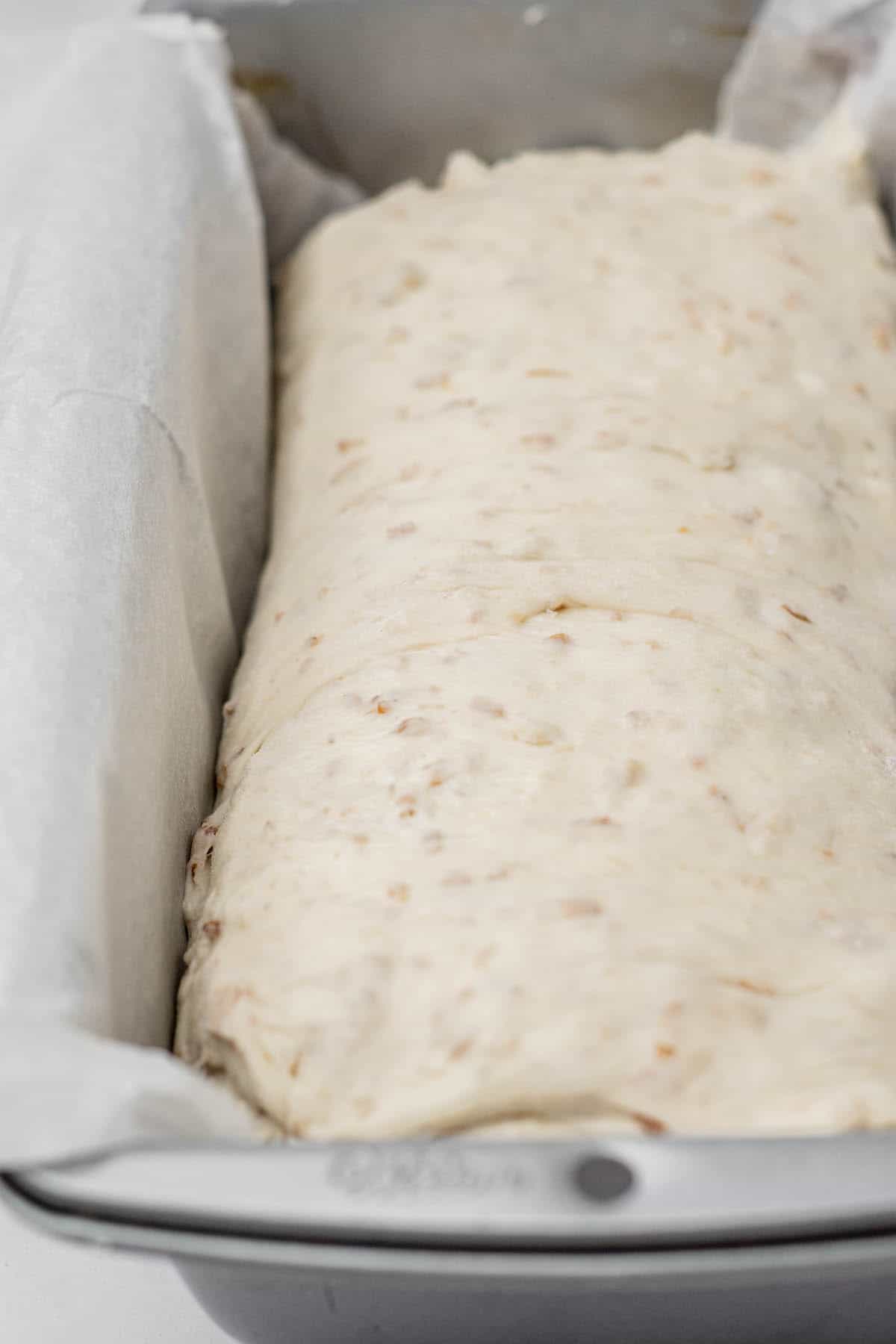
Place it into a bread pan, then repeat with the second piece. Let the dough rise until double in size.
Baking
Brush the top of the dough with a bit of milk and sprinkle with some grains.

Bake the loaves at 375°F/190°C for around 45 minutes until deeply golden brown. Remove the bread loaves from the pans and let them cool to room temperature on a wire rack before slicing.
Storing
Leftover bread can store at room temperature in an airtight container for up to 4 days. As this recipe makes two loaves, I like to freeze a loaf of bread for the following week.
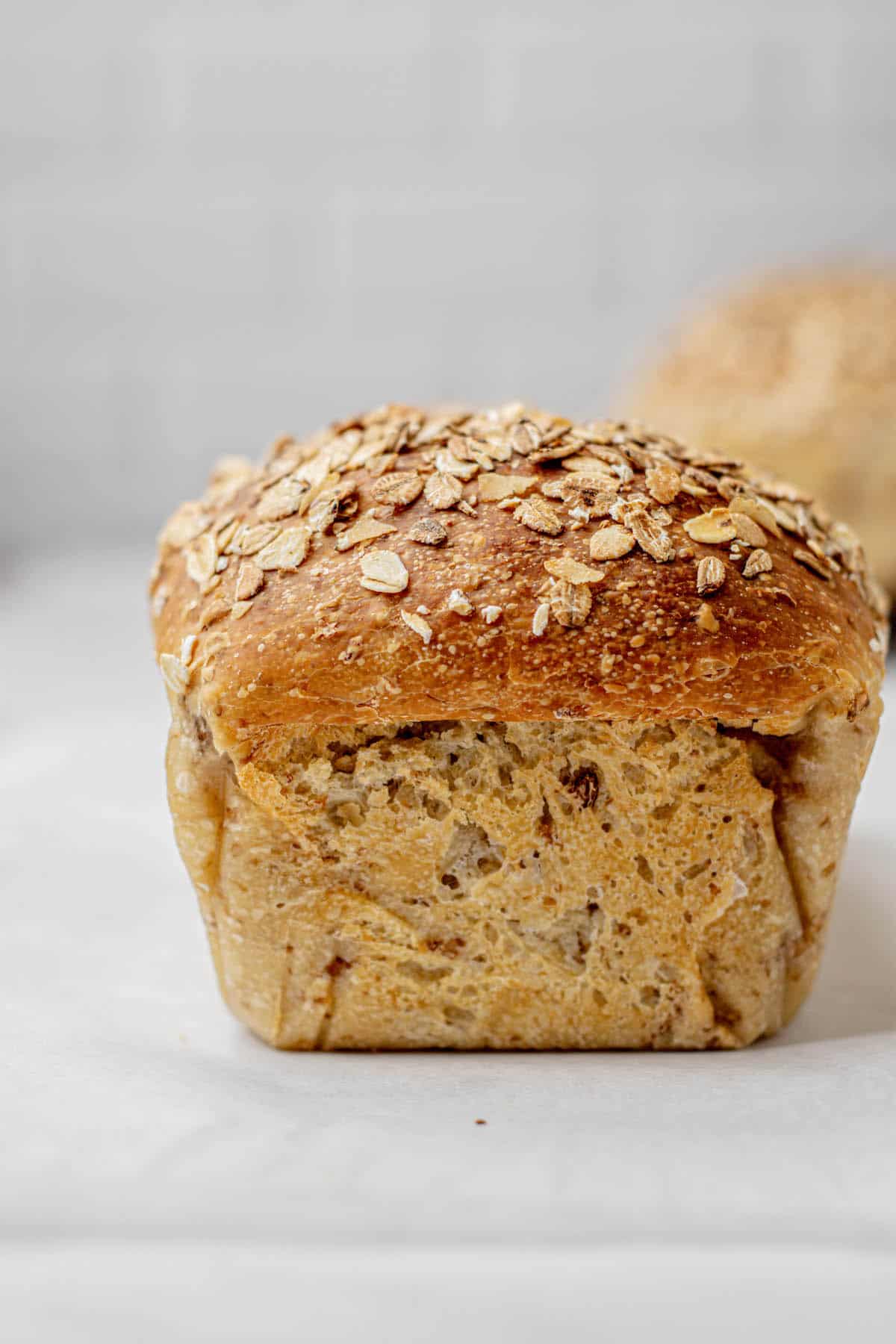
Looking for more sourdough recipes? Try sourdough baguettes or sourdough burger buns!
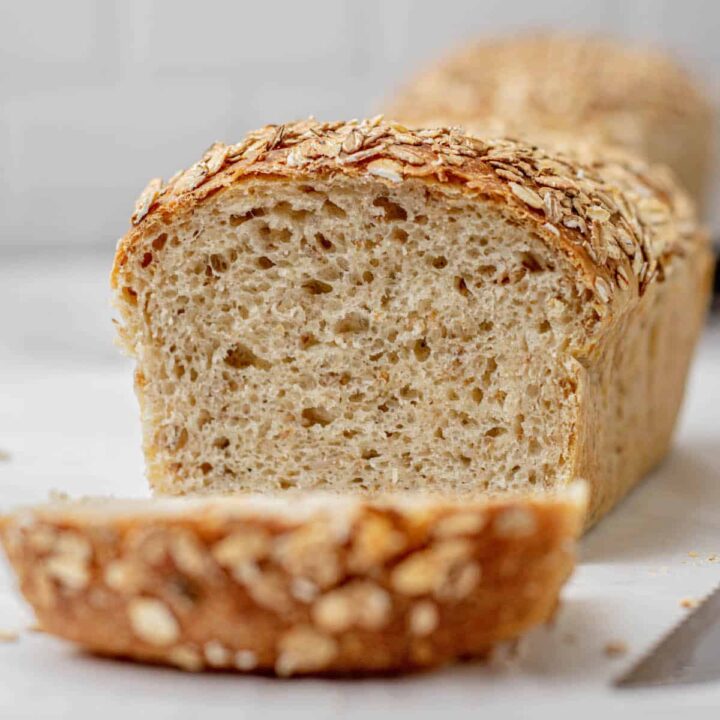
Multigrain Sourdough Bread
This multigrain sourdough bread is hearty, delicious, and great for sandwiches. It's soft and stays moist for days,
Ingredients
Sourdough starter
- 50g sourdough starter
- 50 all-purpose flour
- 50g water
Dough
- 120g multi-grain cereal mix*
- 570g boiling water
- 675g strong all-purpose flour or bread flour
- All the sourdough starter (approx 130g)
- 12g salt
- 25g brown sugar or maple syrup
- 45g unsalted butter, room temperature
Instructions
- Combine the starter, flour, and water in a small bowl. Mix until smooth, then tip into a clean jar, loosely cover, and let it rise in a warm spot until doubled.
- Add the cereal mix to a large bowl and pour over the boiling water. Let it sit and soak until the water has cooled to room temperature.
- Once cooled, add the flour, doubled sourdough starter, sugar, and salt and combine into a thick and sticky dough.
- Tip the dough onto a lightly floured work surface and knead in the room-temperature butter. Knead the dough for 6-8 minutes until it becomes stretchy and strong. This can also be done in a stand mixer fitted with a dough hook.
Bulk fermentation time
- Place the dough in a large, lightly greased bowl. Cover with a damp kitchen towel. Let it bulk ferment in a warm spot until it has bulked out by around 40-50%. The rise time will depend on the temperature. I place mine in a turned-off oven next to a dish of boiled water.
- Cover the dough tightly and refrigerate until ready to shape. This can be up to 24 hours or skipped if you want to go right to shaping. See the baker's schedule examples in the notes below.
Shaping
- Line two 8.5x4.5 inch loaf pans with parchment paper.
- Remove the dough from the bowl and place it on a lightly floured work surface. Shape it into a ball and cut it into two equal pieces.
- Stretch one piece of dough into a rectangle, then roll it up like a Swiss roll. Place it into a bread pan, then repeat with the second piece.
- Let the dough rise until doubled in size, around 4-5 hours, depending on temperature.
Baking
- Preheat the oven to 375°F/190°C.
- Brush the top of the dough with a bit of milk and sprinkle with some extra grains. Bake the loaves for around 45 minutes until deeply golden brown.
- Remove the bread loaves from the pans and let them cool to room temperature on a wire rack before slicing.
Notes
Baker's Schedule examples - feel free to tweak to suit your schedule.
Option 1 - Overnight Cold Proof
- 8 am - Feed the starter
- 12:30 pm - Soak the seeds
- 1:00 pm - Mix and knead the dough.
- 1:15 pm - First rise
- 5:30 pm - Cover and refrigerate overnight
- 8 am the following day - Shape and rise until doubled in size
- 1 pm - Bake
Option 2 - Same Day Bake (not including feeding starter)
- 9 pm - Feed the starter
- 8:30 am following day - Soak the seeds
- 9:00 am - Mix and knead the dough.
- 9:15 am - First rise
- 1:30 pm - Shape and rise again until doubled
- 5:30 pm- Bake
*Multi-grain cereal mix is an unsweetened, unflavored mix made with pure grains like rolled oats, barley, triticale, and rye. If you make your own multigrain blend, use rolled or old-fashioned oats as the base (not steel-cut oats), then add different grains and seeds as you like.
Recommended Products
As an Amazon Associate, a Mighty Ape affiliate and member of other affiliate programs, I earn from qualifying purchases.
Nutrition Information:
Yield: 16 Serving Size: 1Amount Per Serving: Calories: 208Total Fat: 3gSaturated Fat: 2gTrans Fat: 0gUnsaturated Fat: 1gCholesterol: 6mgSodium: 331mgCarbohydrates: 39gFiber: 2gSugar: 2gProtein: 5g






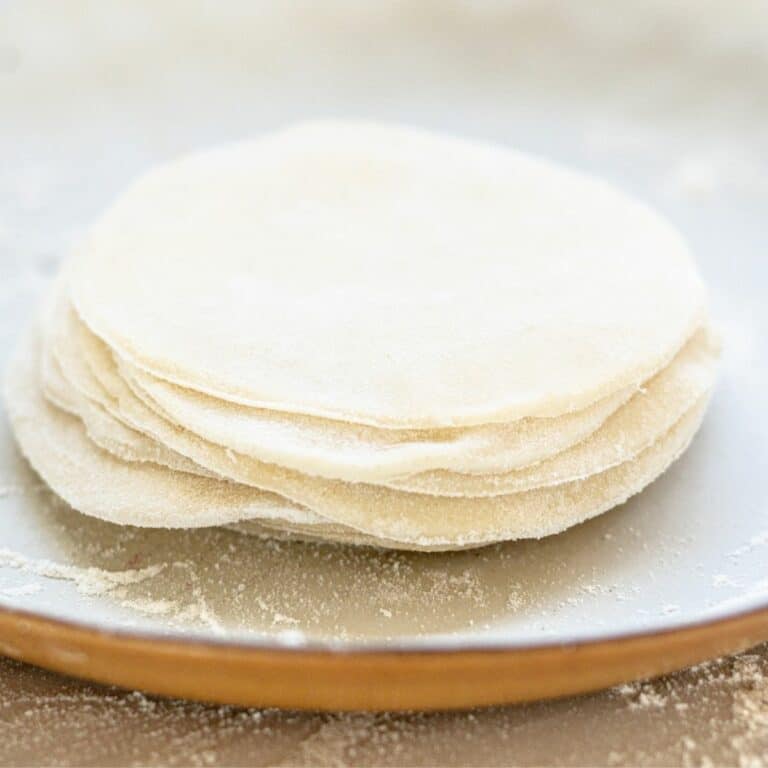
Hi, I’m very keen to give this a go, but was just wondering what brand of cereal mix you use, or where you get it from? I can’t seem to find any at the several supermarkets I’ve tried. Or if I have to make my own is there a certain ratio for the ingredients?
Thanks so much for your help.
Hey! I used the macro Macro Porridge Five Grains from Countdown 🙂 If you were to make your own, I’d use at least 90g rolled oats, and then you can add other grains of choice like rye flakes or brown rice flakes. Or use flaxseeds, chia seeds, etc to make up the extra 30g. You can add even more extra seeds, up to another 50g if you like.
Hi there. Trying out this recipe. My dough after mixing it for 6-8 minutes is a wet, sticky sopping mess! Is it suppose to be like this? Should I add more flour? I could never roll it like this? Does it improve? Thanks.
Hey Lorraine, it definitely shouldn’t be a sopping mess! It’s a sticky dough, but it not at all sloppy. I’m not sure what’s gone wrong for you, but you could add a tablespoon or two of extra flour and see if that helps.
Hi Elien, in the end, it turned out fantastic! It was a little hard to handle but I was able to make it work with a few adjustments here and there. The flour also soaked up a lot of the extra moisture. This is my favourite recipe so far, thank you so much and thanks for replying!
I’m so happy to hear it worked out and you love it 😃😃
Hello Can this bread be baked in 2 batard loaves?
Thank you, Linda
Hey, yes it could 🙂
Can I use oat flour for the bread? I’m low on flour and don’t have enough all purpose flour.
I’ve never made it with oat flour so I can’t say for sure, but I would definitely give it a go with a mix of all purpose and oat 🙂
Could I add amaranth or quinoa to the cereal mix? Also curious as to why there’s no folding during the bulk fermentation. Will doing a couple folds during bulk fermentation improve the loaf? Thanks! I love your raisin bread recipe btw. I make it all the time.
Hey yes you can :). And I don’t stretch and fold this dough because I do the initial kneading at the start. That being said, it you want to do a few additional folds, or swap out the traditional kneading entirely for stretch and folds instead you can!
I really should try this version.
Baked these loaves today and they’re so delicious! I shaped them last night with the thought of proofing overnight, but I got scared that they would overproof. So I put them in the fridge overnight and let them proof on the counter today. I think that may have played into the turnout a bit (they didn’t rise as much as they probably should have). But one thing I did notice was that the oats didn’t stick after baked. Many flake off when I handle the loaf or cut it. Is that just how it works or did I do something wrong? I did use almond milk as that’s all we have.
Hey, so happy you loved them! I think that might be that the loaf tops dried a bit in the fridge overnight, so even with brushing with almond milk the oats would have had a harder time sticking